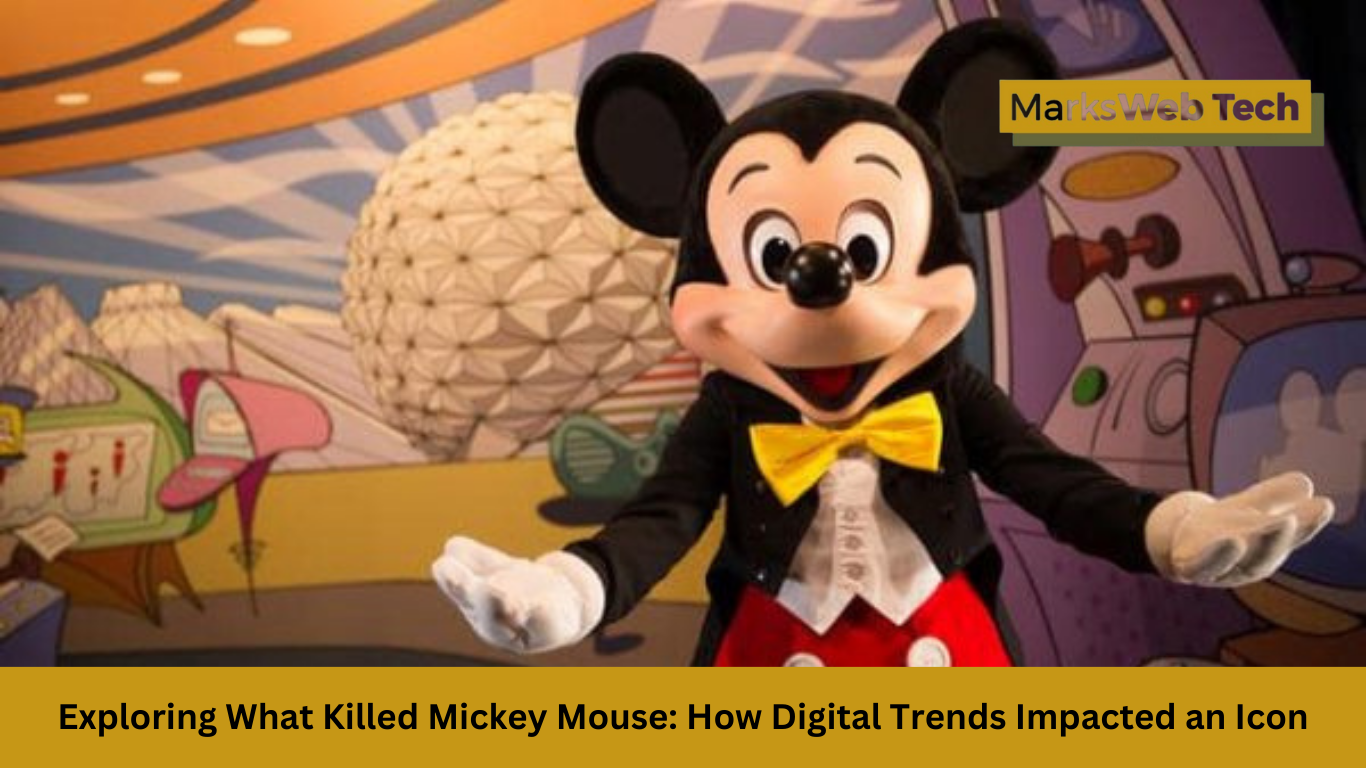Mickey Mouse, one of the most iconic figures in entertainment history, stands as an embodiment of joy, nostalgia and creativity across generations. Since his introduction in 1928 – in movies, TV shows, theme parks and merchandise alike – his image remains iconic and widely revered by audiences. Recently, digital world has been abuzz with speculations surrounding “What killed Mickey Mouse?” This question doesn’t refer to an actual demise; rather, it reflects shifting digital culture trends which have left many questioning the fate of iconic characters such as Mickey. This article investigates the underlying themes behind Mickey Mouse’s surge in popularity and highlights trends that have affected his iconic status, from shifting audience preferences to shifts in content consumption patterns – and uncover the changing landscape which has caused such shockwaves.
The Digital Culture Landscape: A Brief Overview
To understand the recent concerns around Mickey Mouse and other beloved characters, it’s important to first look at the broader digital culture landscape.
- Proliferation of New Characters:
In today’s digital culture, where trends emerge at lightning speed, new characters are quickly embraced by younger audiences. From YouTube personalities to TikTok sensations, these new faces often overshadow older ones. - Shifting Media Preferences:
Audiences increasingly consume content through streaming platforms and social media, where animated icons like Mickey Mouse struggle to maintain the same level of visibility. - Fragmented Attention:
The sheer volume of media available has fragmented audience attention. People are more likely to explore multiple fandoms rather than remain loyal to one character or franchise.
The Rise of New Competition
Mickey Mouse’s initial success can be attributed to his novelty and the limited entertainment options available at the time of his debut. However, today’s digital culture is flooded with new competitors.
- Influencers and Digital Personalities:
Social media platforms have given rise to influencers and digital personalities who quickly attract vast followings. Their relatability and direct engagement with audiences often make them more appealing than traditional animated characters. - International Characters:
Globalization has introduced international animated characters that resonate with worldwide audiences. Popular anime characters, for instance, are often as recognizable as Mickey Mouse. - User-Generated Content:
Platforms like YouTube and TikTok enable users to create their own animated characters, which often garner viral popularity, competing directly with traditional icons.
Changing Demographics and Values
As generations change, so do their cultural values and the media they consume.
- Millennials and Gen Z Preferences:
While millennials grew up with Mickey Mouse as a cultural staple, Generation Z’s interests are more diverse. They seek media that is current, socially conscious, and reflective of their values. - Representation and Inclusivity:
Modern audiences demand representation and inclusivity in the characters they support. While Disney has made strides in diversifying its lineup, characters like Mickey Mouse still carry associations that feel less inclusive. - Desire for Authenticity:
Younger audiences seek characters who exhibit vulnerability and authenticity. They value stories that touch on real-life challenges rather than simple good-versus-evil narratives.
Evolution of Disney’s Content Strategy
Disney, aware of these changing dynamics, has evolved its content strategy to remain relevant in the digital age.
- Acquisitions and Expansions:
Disney has expanded its portfolio through acquisitions like Pixar, Marvel, and Lucasfilm. While these properties attract new audiences, they sometimes overshadow traditional Disney characters. - Streaming Platforms:
The launch of Disney+ has given the company a strong foothold in streaming, enabling it to reintroduce Mickey Mouse to younger audiences through original programming. - Modernization of Classic Characters:
Efforts have been made to update Mickey Mouse’s image through new shows like “The Wonderful World of Mickey Mouse,” which features contemporary animation and humor.
Navigating Controversies and Criticism
Mickey Mouse is not immune to the controversies that come with being a public figure.
- Public Perception:
Some view Mickey Mouse as a symbol of corporate greed due to Disney’s aggressive defense of his intellectual property. This perception contrasts with the wholesome, adventurous spirit of his early days. - Over-Saturation:
The character’s image is so widely recognized that some people feel he has become over-commercialized, lacking the freshness that newer characters possess. - Critical Expectations:
As a legacy character, expectations for Mickey Mouse remain high. New content must balance nostalgia with innovation, which often results in criticism from fans and detractors alike.
Future Outlook for Mickey Mouse
Despite the challenges, Mickey Mouse remains an iconic character with potential for reinvention and continued relevance.
- Repositioning in Modern Media:
By integrating Mickey Mouse into new media formats like interactive games and virtual reality experiences, Disney can reignite interest and engage new audiences. - Collaborative Storytelling:
Allowing Mickey Mouse to interact with other characters from Disney’s expansive universe through crossovers or collaborations could increase his appeal. - Tapping into Global Markets:
By expanding his presence in global markets, Mickey Mouse can connect with diverse audiences and find renewed relevance. - Leveraging Nostalgia:
Disney can continue to capitalize on nostalgia by creating experiences that allow parents to share their love for Mickey Mouse with their children.
Conclusion: The Resilience of an Icon
Mickey Mouse has endured over 90 years of media and cultural shifts with great resilience. While digital culture trends and collective shock suggest his influence may have diminished somewhat, his resilience remains undeniable as an icon. By staying abreast of changing audience preferences and creating innovative methods of engaging fans, Mickey Mouse will continue to bring joy to new generations while still holding onto longstanding admirers’ affection. He won’t just disappear like so many iconic figures have done before! Bringing us back full circle, Mickey will continue his iconic legacy for decades to come without ever being remembered fondly as dead or gone for good! What killed Mickey Mouse?” will no longer exist. Mickey Mouse represents not only contemporary anxieties but also how beloved characters must change to stay relevant in an ever-evolving media landscape. Indeed, his legacy stands as a testimony to imagination and reinvention’s resilience and relevance today.

